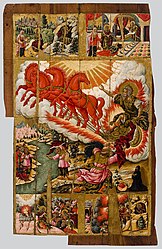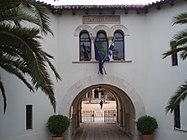Fichier:Poulakis Theodoros-The ascension of prophen Elijah and scenes from his life (borders).jpg

Taille de cet aperçu : 390 × 600 pixels. Autres résolutions : 156 × 240 pixels | 312 × 480 pixels | 499 × 768 pixels | 1 080 × 1 661 pixels.
Fichier d’origine (1 080 × 1 661 pixels, taille du fichier : 480 kio, type MIME : image/jpeg)
Historique du fichier
Cliquer sur une date et heure pour voir le fichier tel qu'il était à ce moment-là.
| Date et heure | Vignette | Dimensions | Utilisateur | Commentaire | |
|---|---|---|---|---|---|
| actuel | 12 février 2017 à 12:53 |  | 1 080 × 1 661 (480 kio) | Shakko | =={{int:filedesc}}== {{Information |description={{en|1=The Ascension of the Prophet Elijah and scenes from his life}} The icon is divided into three bands. The central one depicts the Ascension of the Prophet Elijah to heaven on a golden chariot of fi... |
Utilisation du fichier
La page suivante utilise ce fichier :
Usage global du fichier
Les autres wikis suivants utilisent ce fichier :
- Utilisation sur en.wikipedia.org
- Utilisation sur es.wikipedia.org
- Utilisation sur www.wikidata.org



